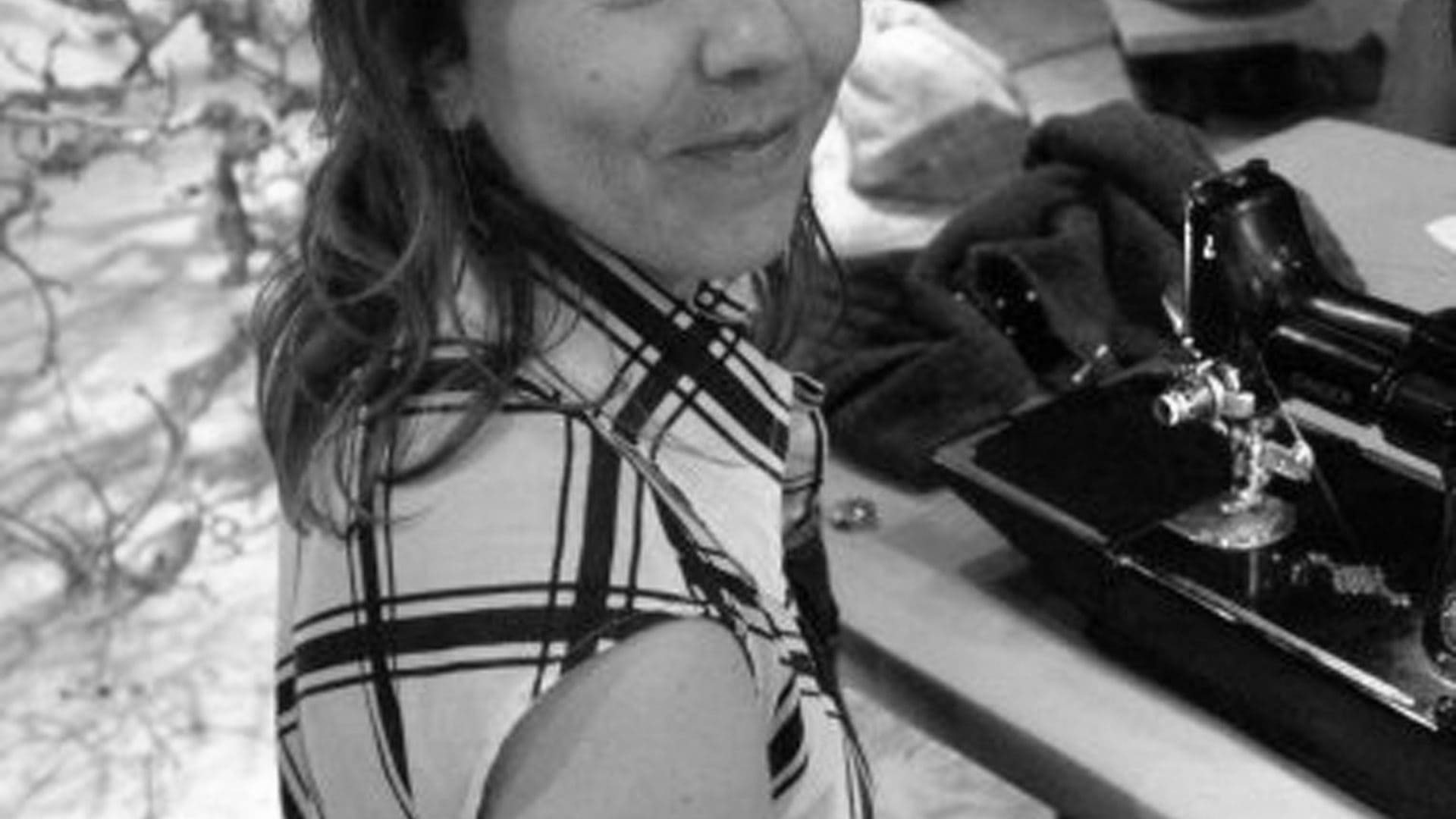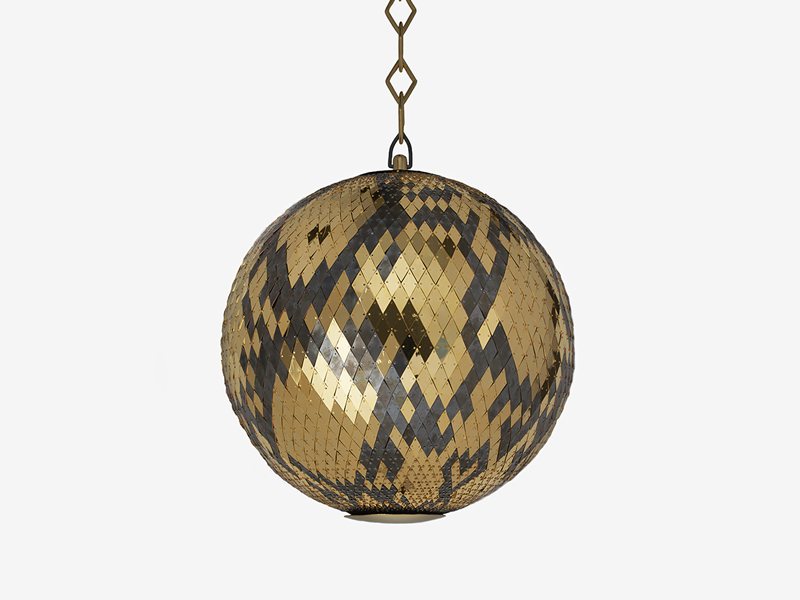
The seductive snakeskin-inspired jewelry in Mallory Weston’s exhibition, Of Ophidia, at Sienna Patti represents a new direction for the Philadelphia-based artist. Still rooted in the study of symbols, this recent body of work is a departure from her previous exploration of ubiquitous contemporary icons, refocusing on the historically polarized symbolism of the serpent. Rich in texture and movement, her pieces are a result of the meticulous combination of precious metals and leather. In this interview we talk with Mallory about themes in her work, including seduction and desire, pleasure in the unexpected, and the balance of masculine and feminine perspectives.
Ahna Adair: Where are you from, and where do you live now?
Mallory Weston: I’m from the United States and I’m currently living and working in Philadelphia.
Did you grow up in an environment that shaped your interest in art and craft? And how did you arrive at jewelry and metalwork?
Mallory Weston: I have been making jewelry in some form or another since I was a kid. I started out with things like macramé and beading, but slowly worked my way up to more complicated techniques. When I was in high school I got a job at a bead shop. The woman who owned the store played a huge role in motivating me to keep building my skills and supporting my creativity and independence as an artist. After high school, I enrolled at the University of the Arts in Philadelphia with the intention of studying glass, but simultaneously decided to take a jewelry and metals class as well. It turned out I hated glassblowing but loved working with metals, so I shifted my focus. In retrospect, this seems like a really natural continuation of my interest in making jewelry as a teenager.
On top of those factors, my father has made his living working with metal. He owns a business designing and machining engine blocks for race cars, so while it’s a completely different thing than what I do, I believe it’s helped shape my path. I grew up doing odd jobs around his shop with my brother; surrounded by huge machines, hulking blocks of aluminum and steel, and the incredibly familiar smell of grease. My dad also has really steadfast views about work ethic and craftsmanship, and I think those lessons were a big influence.
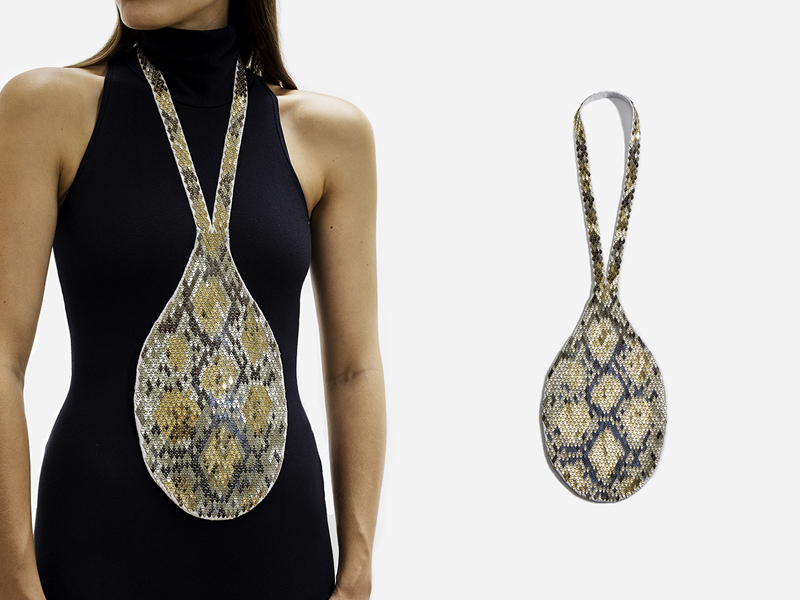
The work you just presented at Sienna Patti is wearable, with a strong relationship to the body (unlike upcoming work that will be shown at PULSE). Skin Shed #1 and #2, for instance, fall between the breasts and lay over the stomach like a piece of clothing or a second skin. Can you talk about these formal choices?
Mallory Weston: I definitely see these pieces as part of the same series, and I like the idea that the objects connect with the jewelry in a number of different ways. Especially the disco ball: even though it’s an object, it has a direct effect on the body and the environment, in combination with light and movement, because of the reflections that it casts.
The body is the factor that completes my work. I’m creating skins with movement and weight, so in the absence of the body the piece lies flat. I’ve been told that my work is very two-dimensional, but I don’t see it that way, because when worn, the work transforms and contours to the curvature of the wearer’s body. This also means the piece becomes unique from person to person.
The title of this show, Of Ophidia, highlights your use of the snake, a subject that has a rich symbolic history with a multitude of meanings. In past work you have dealt with modern icons with a seemingly more univocal meaning. Is your intent to harness the varied symbolism of the serpent, or are you partial to a particular narrative?
Mallory Weston: I entered this body of work as a transition from my interest in working with symbols. In the past, I utilized a variety of different icons, fascinated by their ubiquity and how their meanings transform over time. Serpent imagery is present throughout art history and the history of adornment, and snake symbolism was used in both a positive and negative context. I thought it merited a deeper exploration with the creation of a body of work.
I also find it interesting how people’s opinions of snakes are so polarized. I personally find snakes to be absolutely mesmerizing; their movement, the shape of their body, the way they eat, their patterns and variations, everything! But I also understand how other people can be completely terrified or repulsed by snakes. This body of work takes that idea of a plurality of meanings and distills it down into a potent response.
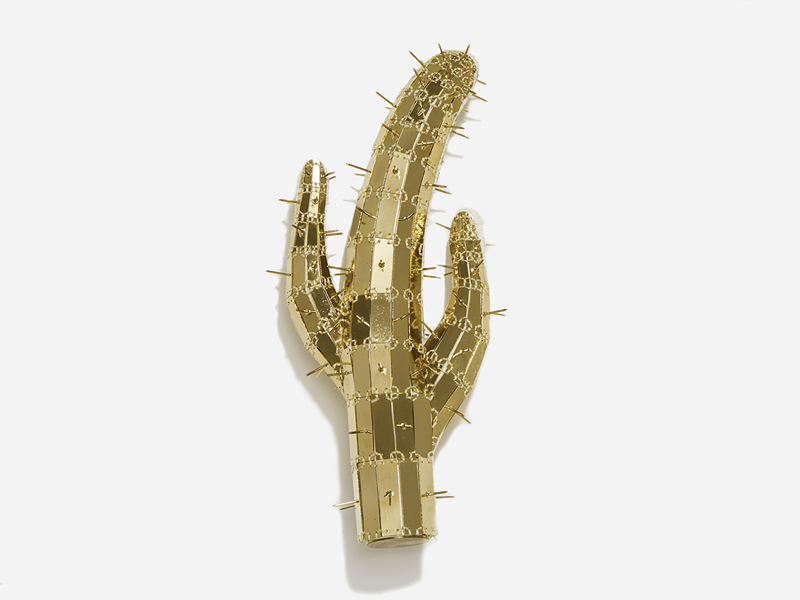
In this body of work you pair up phallic formal references with an iconography of hanging, and sagging. Can you tell me about this dialogue, and what seems to be an interest in polarized metaphors?
Mallory Weston: In past work, I played with cartoon humor and vulgarity in relation to jewelry and the body. I think that the pieces that have a strong relationship to phallic imagery are a side effect from that body of work. I think that most of the work from Of Ophidia is strongly feminine in characteristics; I thought it was important to have a masculine counterpoint to some of the work. Snake symbolism usually involves opposing and diametric forces, a traditional yin and yang, so I wanted my work to touch on both masculine and feminine perspectives.
In your bio picture you are wearing leather bondage. Many of your pieces have a fetish-like quality and bring to mind aesthetics of S&M culture. Can you talk about fetish, pain, and pleasure in relation to your work?
Mallory Weston: Seduction and desire are very important in my work. But just like the most beautiful animals and plants, my work also has defense mechanisms. Some of my pieces are covered with points and spikes, though crafted from alluring materials. They are attractive to the viewer and protective of the wearer. Sort of like BDSM, my work tests the limits of what is tolerable and wearable. Some of my work can be a challenge for the wearer, but that doesn’t mean there isn’t pleasure involved. Other pieces I’ve made are surprisingly wearable and people are always surprised by the significant weight of the work. The pieces have a presence as they drape across the body, and I think many people find that weight to be comforting. The important thing is that sometimes you find pleasure in something surprising or unexpected.

The Gold Room is not gold at all. And it has a drastically different quality from the other work in the show. Tell us about this piece.
Mallory Weston: I agree with you that that piece is the outlier of the group, although it is constructed using the same techniques as most of the pieces in Of Ophidia. I think that it either belongs to past bodies of work or is a transitional piece into my next body of work. It is inspired by the interior design patterns from the movie The Shining, directed by Stanley Kubrick. After learning about the symbolism and conspiracy theories concealed within the film, it seemed connected to my study of more traditional types of symbols. The piece is named after “The Gold Room” in the film, the space where Jack Torrance first begins to hallucinate.
You have perfected a technique that involves sewing hundreds of metal pieces onto leather. The finished product is beautiful, sensuous, and obviously a very labor-intensive process. How does this accumulated (wo)man-power play into the themes you are working on?
Mallory Weston: I’ve been working with this technique for a few years, but it’s only been in the past year or so that I’ve been creating the snakeskins. I consider myself an art jeweler/metalsmith, but I also love working with fiber and textile techniques. This process allows me to satisfy both of those interests at once. I think many textile techniques are notoriously labor intensive, but I get great satisfaction from building a surface up from nothing.
I think the snakeskin began out of sheer curiosity as to whether or not it would be possible to replicate the movement and patterns of a snake with my stitching technique and using only the palette that metal had to offer me. The movement is absolutely crucial to the success of the piece and this is the only technique I could think of that would allow metal to move with the fluidity of fabric.

What does this duration in making look like for you? When working, do you listen to music or watch movies, or do you take a more puritanical approach?
Mallory Weston: I love listening to podcasts while I’m working. I’m most interested in nonfiction shows, like 99% Invisible, Imaginary Worlds, and Hidden Brain. I was also consumed with following political coverage throughout the summer and fall. Music is good too, but I find that I always learn something unique or interesting when I’m listening to podcasts. This only goes for when I’m working in the studio, though; if I’m doing any sort of writing, I need complete silence.
Other artists of late have delved into the topic of camouflage, including Rebecca Hannon and Lindsay MacDonald, who were also recently interviewed by AJF. Within your work I see a conversation between the “bling” of the cactus pieces and the almost camouflage qualities of the snakeskins. What does this dichotomy mean to you?
Mallory Weston: I think that materials are one of my most important tools to seduce the viewer, and gold is undeniably seductive. Camouflage is an absolute necessity in nature, yet many animals have evolved characteristics that are completely at odds with the need to blend in with their surroundings to avoid predators. In most instances, the remarkable traits they’ve developed serve the sole purpose of seduction. I think it’s so fascinating that the power to seduce can almost be more important than survival, or critical to survival, depending on your perspective. To seduce is dangerous, it is taking a great risk, but it is also necessary and leads to creation of the most beautiful things.
By disguising base metal through gold plating and painstakingly replicating snakeskin, you employ mimicry in order to harness the seduction and desire of these materials. Mimicry is also a form of deception. Are you interested in the language of duplicity in this work?
Mallory Weston: Sometimes I have to improvise to convey the messages that I’m striving toward, due to the scale of the work and my material choices. The gold plating and the mimicry involved are a means to an end. If it looks like gold, then it is gold, in my opinion. The work is duplicitous in its imitation of nature, which has a long history in adornment. Traditional jewelry pieces emulating nature have to rely on gemstones, technically superb enamel, and precious metals to be anything close to the real thing. In the process they become their own art form, signifiers of virtuosity in their own way. Similar to their source and unique at the same time. I’m not claiming to have a skill level anything close to the masters of Art Nouveau jewelry, but their mastery is something I admire and strive for in my work.

What is a day in your studio like? Do you have any habits or rituals that help your creative process?
Mallory Weston: I can’t say that I have any habits or rituals; the most important thing for me is to keep making. There’s always the risk of getting overwhelmed by the other demanding aspects of your life. I think that it helps that I recently got a shared studio space with some other Philadelphia jewelers, Leslie Boyd, Emily Cobb, Melanie Bilenker, and Maria Efie. This has been a huge positive change. It’s been really motivating to be a part of a community and to bounce ideas off of other people; even just being able to work alongside someone else is amazing.
You are a teacher as well as a maker. Your website states that in addition to your studio practice you are invested in educating the next generation of metalsmiths. What is your take on the level of interest of incoming art students in jewelry and metalwork?
Mallory Weston: I’m still new to teaching and I’ve been slowly building my experience semester by semester. I have a really diverse group of students across the four universities where I teach. Some students are art students and others are from completely unrelated areas of study. It’s always interesting to see what students from a different background can bring to the table. This past semester I had a ton of engineering students in my class and it was great to have such a large concentration of students with such an analytical and mathematical mode of thinking. At another one of the schools, I’m working with a small group of students who are concentrating on jewelry and metals as part of their fine arts degree. It’s really invigorating to see their level of engagement and motivation! But at the same time, it can be challenging to acclimate students to the demands of jewelry and metals; I don’t think most students realize that the course will be rigorous.
Your work has been purchased by some notable individuals, including comedian Patton Oswalt and science fiction writer Harlan Ellison. At risk of pandering to sensationalism, there have to be some interesting stories here. Please share.
Mallory Weston: These projects were a collaboration that I worked on with a group of my peers from UArts, Kaitlin Kerr, Maricha Genovese, Emi Savacool, and Joe Pillari. Stemming from our love of listening to stand-up comedy during late nights in the studio, and following a crazy sequence of events, we were contacted to do some commission work for Patton Oswalt. Our most unique piece was a custom sword featuring a hilt with a hidden removable (and functional!) sterling whiskey flask and two sterling cups. I can honestly say that this is the most insane and challenging thing I’ve ever made. It has also been great to collaborate with my close friends on a series of really creative and deeply meaningful commissions.
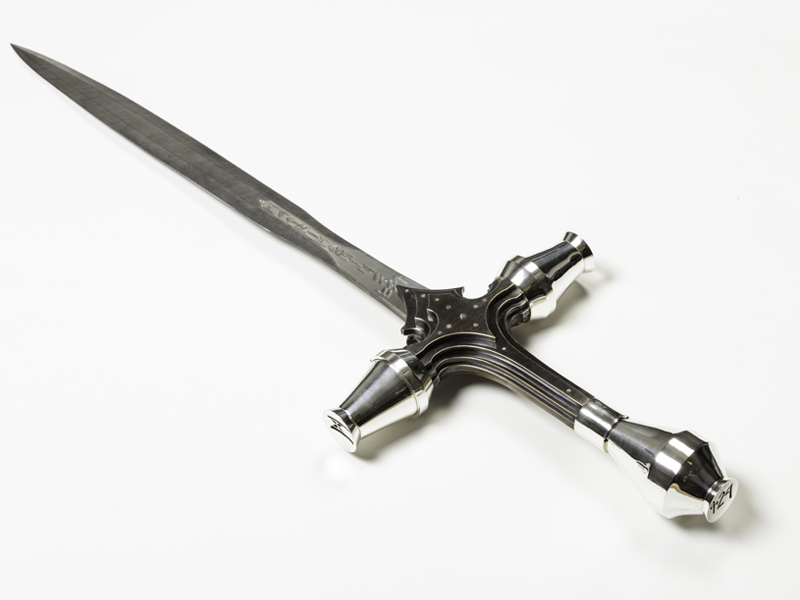
Which artists have inspired you and propelled you forward, both within your discipline and outside of it?
Mallory Weston: I am in awe of David Bielander’s work. I think if I could only own one piece of jewelry ever, it would be one of his cardboard bracelets. There are a lot of jewelers that I admire, but especially the work of Hannah Hedman, Alexander Blank, Jing Hi, Adam Grinovich, and Helen Britton. The only time I have ever been moved to tears in the presence of art jewelry was at Lola Brooks’s exhibition, Flights of Fancy, in the spring of 2015. Lola was also one of my instructors at UArts and RISD and was very inspiring and influential.
I love Mike Kelley’s work. One of his pieces has been etched in my memory since I saw it at his retrospective in New York. I searched desperately to find an image online and it’s titled Endless Morphing Flow of Decorative Motifs. It’s a huge jewelry case filled with hundreds of found charms, pendants, and talismans arranged in a mesmerizing taxonomy where one symbol transitions seamlessly into the next.
INDEX IMAGE: Mallory Weston, 18K Saguaro Cactus, 2015, brooch, gold-plated brass, nickel, cotton, polyester, thread, 254 x 127 x 38 mm, photo: Ian Shriver
